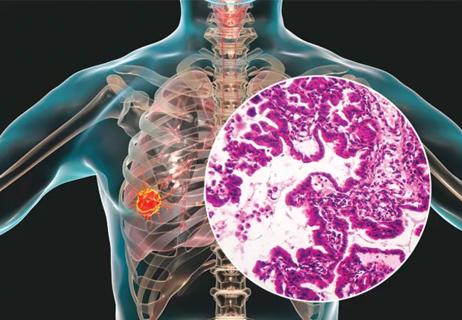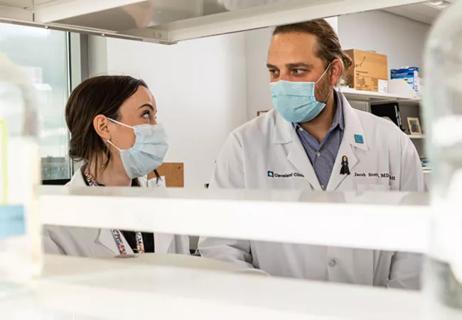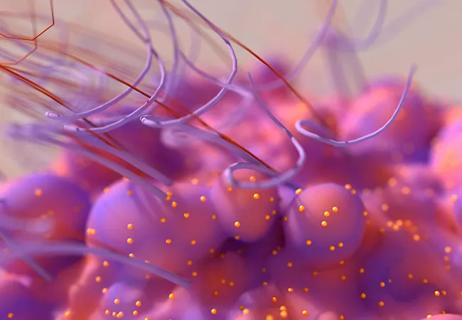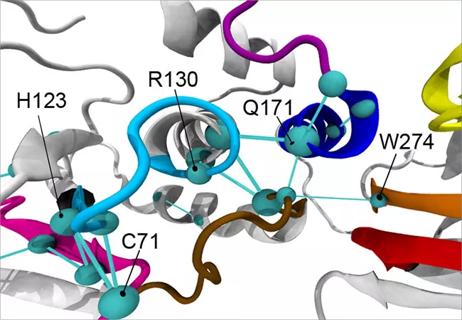A history of breastfeeding is associated with a 23% reduction in the risk of ovarian cancer among women who carry BRCA1 or BRCA2 mutations, new research finds.
Cleveland Clinic is a non-profit academic medical center. Advertising on our site helps support our mission. We do not endorse non-Cleveland Clinic products or services. Policy
Other reproductive and hormonal factors, including oral contraceptive use, parity and tubal ligation, also appeared protective against ovarian cancer in the study, which involved more than 4,000 carriers of deleterious germline BRCA gene mutations seen at 61 centers in 15 countries.
Breastfeeding has been shown previously to be associated with long-term protection against ovarian cancer among women in general, and specifically among women with BRCA1 and BRCA2 mutations. The new study aimed to account for factors including timing and duration of breastfeeding, parity and other reproductive and hormonal exposures.
“The results of this study suggest a strong, protective role of breastfeeding in women with a germline BRCA1 or BRCA2 mutation that appears to be independent of oral contraceptive use,” says Charis Eng, MD, PhD, Chair of Cleveland Clinic Genomic Medicine Institute and the Sondra J. and Stephen R. Hardis Endowed Chair in Cancer Genomic Medicine.
Dr. Eng is a member of the Hereditary Ovarian Cancer Clinical Study Group and a coauthor on the study published in Gynecologic Oncology.
The study included 1650 women with ovarian cancer (cases) and 2702 without (controls). About 80% of the entire group had BRCA1 mutations and the rest had BRCA2 mutations. The cases and controls were matched for year of birth, country, BRCA gene, and personal history of breast cancer.
Fewer cases than controls reported a history of breastfeeding, 58.8% versus 64.9% (P < 0.0001). Among those who breastfed, the duration of breastfeeding was shorter among those who developed ovarian cancer, averaging 13.0 months compared to 14.5 months for the controls (P = 0.01).
After adjustment for oral contraceptive use, parity and tubal ligation, having ever versus never breastfed was associated with a 23% reduction in the risk for developing ovarian cancer (odds ratio [OR] 0.77, P = 0.01).
The protective effect increased by duration of breastfeeding from one to seven months, then leveled off. The effect was stronger for women with BRCA2 compared to BRCA1 mutation, with significant ovarian cancer risk reductions for both of 38% versus 29%, respectively.
The protection conferred by breastfeeding for seven or more months was even stronger among the women who also had a history of oral contraceptive use compared to those who didn’t (OR 0.55 vs. 0.87). The risk for ovarian cancer was reduced to the greatest extent, by 53%, among women with a history of both breastfeeding and oral contraceptive use (0.47, P < 0.0001).
One possible explanation for the protective effect comes from the “ovulatory cycle theory,” that every ovulatory cycle causes repeated trauma to the ovarian epithelium, which over time could increase the possibility neoplastic transformation through mutation or inflammation. Thus, both breastfeeding and oral contraceptives might reduce cancer risk by reducing the number of these cycles.
However, in this study there was no further reduction in ovarian cancer risk after seven months of breastfeeding, while adding an oral contraceptive further reduced the risk. That suggests there may be different mechanisms of protection for breastfeeding and oral contraceptives, Dr. Eng points out.
A related hypothesis is that changes in circulating hormones that occur during breastfeeding, particularly a reduction in pituitary gonadotropin secretion and a concomitant decrease in estrogen levels, might inhibit epithelial proliferation and also the potential for malignant transformation. A drop in gonadotropins would further inhibit ovulation and subsequently circulating estrogen and progesterone.
While the cumulative number of ovulatory cycles may play a role in the risk for ovarian cancer, other protective factors are likely at work. As women age, premalignant cells accumulate in the ovary due to inflammation and genetic mutations associated with cyclical ovulation and subsequent tissue repair. Although small, there is a chance of progression of premalignant lesions to invasive cancers. According to another theory, pregnancy helps clear existing premalignant lesions from the ovary.
“It’s important that we uncover the underlying mechanism for this effect so that we can develop targeted prevention options,” Dr. Eng says.

Universal testing could reduce expected costs compared to EGFR single gene testing

Research enables precision medicine beyond patients with changed mutational status

Understanding cell growth dynamics may be key to controlling therapeutic resistance

Specialized clinic addresses long-term wellness through the study of somatic mutations

Improved risk stratification for all women

Adrenal-permissive HSD3B1 plays a role

Clinicians and researchers with unique expertise

Actionability of tumor DNA data remains limited